Undoubtedly, safety comes first, no matter the task you're performing. Whether you're a front-line worker, laborer, or simply carrying out day-to-day chores, it's essential to remain protected to minimize the risk of accidents. One such way to ensure safety is by using anti-cut gloves, a protective gear designed to secure your hands from potential cuts and injuries. Is it not exciting to think about how a small investment in safety can prove pivotal in ensuring your hand's health? Read along as we delve into the colorful world of the cut-resistant gloves market, exploring its trends, and evaluating the benefits of using anti-cut gloves.
Overview of the Cut-Resistant Gloves Market
The hand protection industry is experiencing a substantial shift in the cut-resistant gloves market. It is important for professionals, whether in industries like construction, manufacturing, or even home DIY enthusiasts to ensure their hands are safe from potential injuries. Therefore, the demand for cut-resistant gloves is profoundly increasing.
Global Market Growth
Statistics reveal that the global cut-resistant gloves market is forecasted to grow at a compounded annual growth rate (CAGR) of 6.9% from 2023 to 2031. The remarkable participation from developing nations significantly contributes to this surging growth. In essence, the increased awareness of the importance of workplace safety, combined with regulatory standard implementation, is propelling the market trends.
U.S. Market Projection
Digging deeper into this glove industry, the United States holds a robust position. The U.S. market for cut-resistant gloves is expected to witness a steady rise, reaching USD 7.69 billion by 2031 at a CAGR of 4.0%. This growth is largely attributed to an increase in stringent workplace safety rules and the expansion of various industrial sectors.
Americas Reusable Gloves Market
Moreover, North America’s strong consumer base contributed to a staggering 37.96% market share in 2023. The projected rise up to USD 1.14 billion in the cut-resistant gloves market between 2023 and 2028 further demonstrates the significance of this region in the globe's larger glove market. It reiterates the prominent and continually growing role that North America plays in the reusable gloves market.
Cut-Resistant Gloves Demand
With the steady rise in demand for cut-resistant gloves, it is crucial to understand various glove options and their suitability for specific tasks. By Navigating the Work Glove Market effectively, you can ensure you are adequately protected without compromising comfort or dexterity. These industry forecasts should solidify the importance of quality hand protection and the role cut-resistant gloves play within it.
So, the future of cut-resistant gloves seems bright. The key to riding this wave of growth, just as in any burgeoning market, is recognizing changes in the industry, understanding consumer demands, and pushing for innovation that meets those demands. Together, these factors can create an ideal landscape for businesses focused on supplying cut-resistant gloves and related safety equipment.
Trends in the Protective Gloves Market
In recent years, advancements in the protective gloves market have exhibited a considerable shift, with substantial contributions from various factors. Among these evolutions, the rise in worker safety awareness and the impact of labor-intensive industries stand out as the most influential. As the world becomes increasingly industrialized, these areas continue to drive growth in the protective gloves market, shaping its future landscape in fascinating ways.
Rise in Worker Safety Awareness
Modern society places significant emphasis on safety at the workplace, fostering an environment that protects labor rights while also ensuring increased productivity. This surge of worker safety consciousness has brings about a dynamic transformation in the protective gloves market.
- Increasing Demand - As awareness about physical hazards surge, the demand for specialized gloves to safeguard workers' hands against potential injuries soars.
- Government Regulations - In many regions worldwide, stringent government regulations about workplace safety have become increasingly commonplace, encouraging businesses to invest in protective gear such as gloves.
- Education and Training - Organizations are investing in safety training for workers, emphasizing the importance of personal protective equipment (PPE) and its correct usage.
This awareness about worker safety isn't just beneficial for employees - it also benefits employers significantly. For instance, fewer accidents imply lesser downtime and increased productivity. Even more, businesses that prioritize safety often have higher worker morale, reductions in turnover, and improved reputational standing.
"As per industrial safety norms and labor laws, it is essential to provide safety gear to workers. Ensure your employee safety today with our Top Work Gear Elements."
Impact of Labor-Intensive Industries
Labor-intensive industries such as construction, manufacturing, and agriculture significantly contribute to the growth of the protective gloves market. These sectors often expose workers to potential hazards that can lead to severe hand injuries. Hence, the rise in these industries directly leads to an increase in demand for protective gloves.
- High-Risk Jobs - Certain jobs come with high-risk factors due to direct exposure to sharp instruments, chemicals, or extreme temperatures. Protective gloves provide the requisite safety.
- Technological Advancements - Today’s market offers gloves that are not only robust but have also evolved to provide greater comfort and flexibility, increasing their adoption in heavy-duty industries.
- Market Projections - With the anticipated rise in these sectors, the global cut-resistant gloves market is projected to increase by a whopping USD 943.75 million from 2023 to 2031. Moreover, the global work gloves market is expected to see a steady Compound Annual Growth Rate (CAGR) of 9.64%.
It's evident that the protective gloves market is experiencing exciting growth, driven significantly by the rise in safety awareness and the evolution of labor-intensive industries. The future holds immense potential, making it imperative for businesses to stay updated on these trends and adapt accordingly to ensure workplace safety.
Benefits of Anti-Cut Gloves
Safety should always take precedence in any workspace, especially in industries that require hands-on manufacturing, construction, or any mechanical work. As part of a comprehensive safety protocol, the use of protective accessories like anti-cut gloves is highly recommended. Such gloves not only protect the wearer from potential cuts and abrasions but also offer additional benefits that may not be immediately obvious.
One of the standout features of high-quality anti-cut gloves is the utilization of high-performance fibers like Dyneema®.
Use of Dyneema® Fiber
Dyneema® fiber, renowned for its impressive durability and strength, has been instrumental in the design of top-tier anti-cut gloves. The gloves have been woven using this extremely resilient fiber, which notably increases their protective capabilities. With Dyema® fiber as a prime component, the gloves provide a significant level of cut resistance without sacrificing flexibility or comfort.
The benefits of using Dyneema® in the making of these gloves are manifold. Here are a few key features:
- Superb Cut Resistance: Dyneema® fiber is 15 times stronger than steel on a weight for weight basis. This incredible strength offers unparalleled protection against cuts and abrasions that can occur in the workplace.
- Lightweight and Comfortable: Despite its robustness, Dyneema® is surprisingly light and ultra flexible, making the gloves comfortable to wear for extended periods.
- Durability: These gloves are designed to last, thanks to the extreme durability of Dyneema® fiber. Its intrinsic properties ensure minimal wear and tear, even after repeated use.
"Anti-cut gloves using Dyneema® fiber provide unparalleled cut protection and comfort."
Selecting the right work gear is an important aspect of any workplace safety plan. It’s crucial to find equipment that balances robust protection with comfortable use, like the anti-cut gloves using Dyneema® fiber. Our detailed guide to Work Gear Balancing Durability and Comfort can provide more insights into making the right choice for your unique needs.
Remember, prioritizing worker safety doesn't mean compromising on comfort or functionality. With suitable protective gear, we can indeed craft a workplace that epitomizes both safety and productivity. Investing in high-quality anti-cut gloves made with Dyneema® fiber offers robust protection without hampering workers' performance, thus ensuring overall workplace efficiency.
Conclusion
Protection is not an option; it's a necessity. As we've dissected throughout this article, the protective gloves market is rising in response to increased awareness of worker safety and the demands of labor-intensive industries. The use of Dyneema® fiber in glove construction assures that end-users can carry out their duties without compromising their safety.
By the same token, outfits like Rain Gear Pro rise to the challenge of providing essential PPE in areas such as chainsaw safety. Their Canadian-made chainsaw safety pants have been engineered for longevity, designed to resist crotch blowouts, reinforced with Kevlar inserts, and carefully crafted to provide a fortifying blend of supreme protection and optimal comfort. In essence, protection doesn't mean discomfort, and Rain Gear Pro affirms this convincingly.
As we move forward, the need for quality, resilient, and reliable protective gear will continue to grow, and companies like Rain Gear Pro, committed to manufacturing excellent work gear, underscore the essence of safety in all workspaces.
Frequently Asked Questions
-
What are anti-cut gloves?
Anti-cut gloves, also known as cut-resistant gloves, are specially designed gloves made from high-performance materials such as Kevlar or stainless steel mesh. These gloves provide protection against cuts, slashes, and abrasions while performing tasks that involve sharp objects or materials.
-
Who should use anti-cut gloves?
Anti-cut gloves are ideal for individuals working in industries or occupations that involve handling sharp objects or materials. This includes professionals in industries such as construction, manufacturing, automotive, glass handling, metalworking, and woodworking. They are also useful for kitchen use, gardening, and other activities where there is a risk of cuts or abrasions.
-
What are the benefits of using anti-cut gloves?
The benefits of using anti-cut gloves include protection against cuts and scratches, increased safety and reduced risk of injuries, improved grip and dexterity, and enhanced comfort. These gloves also provide added insulation and resistance to heat, cold, and chemicals in some cases.
-
How to choose the right size of anti-cut gloves?
To choose the right size of anti-cut gloves, you should measure the circumference of your hand at its widest point, typically around your knuckles. Compare your measurement with the sizing chart provided by the manufacturer to determine the appropriate size. It's important to have a snug fit without being too tight or too loose.
-
Are anti-cut gloves machine washable?
Most anti-cut gloves are machine washable, but it is always recommended to check the manufacturer's instructions for specific care guidelines. Some gloves can be washed with mild detergent and warm water, while others may require handwashing. After washing, allow the gloves to air dry before using them again.



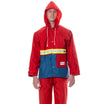
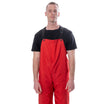
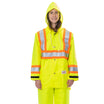
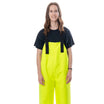
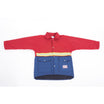
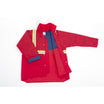

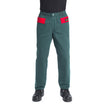
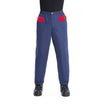
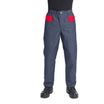
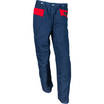
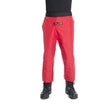
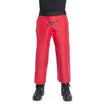
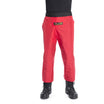
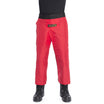



Leave a comment
This site is protected by hCaptcha and the hCaptcha Privacy Policy and Terms of Service apply.